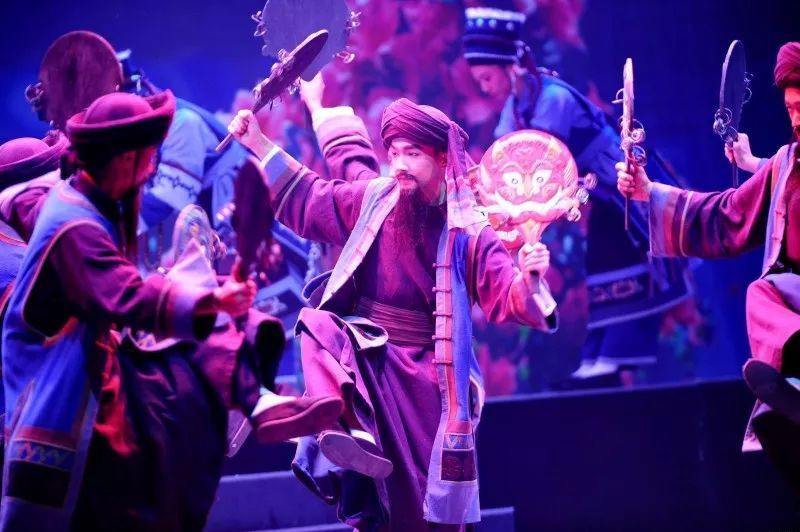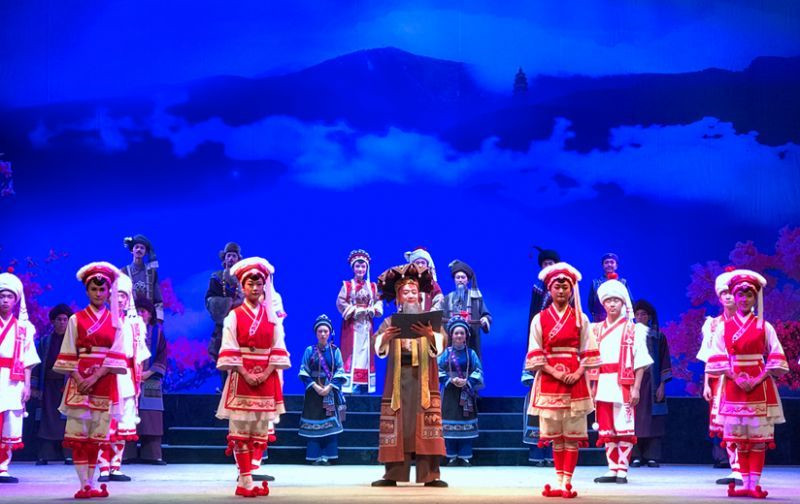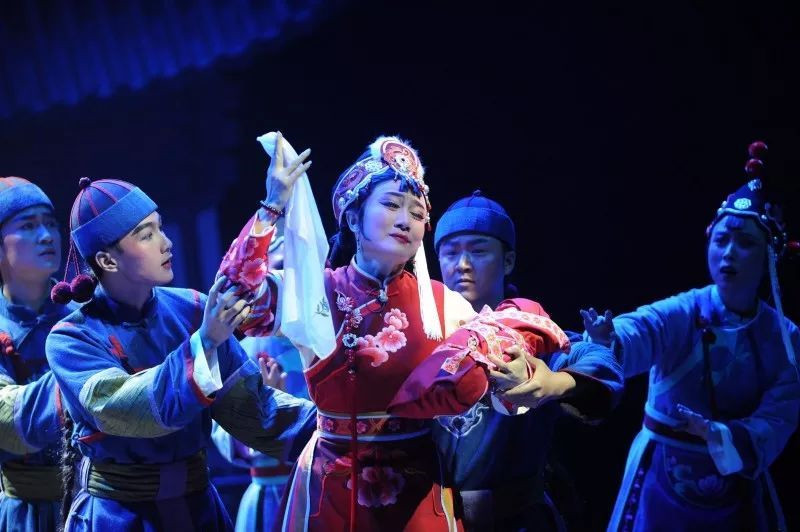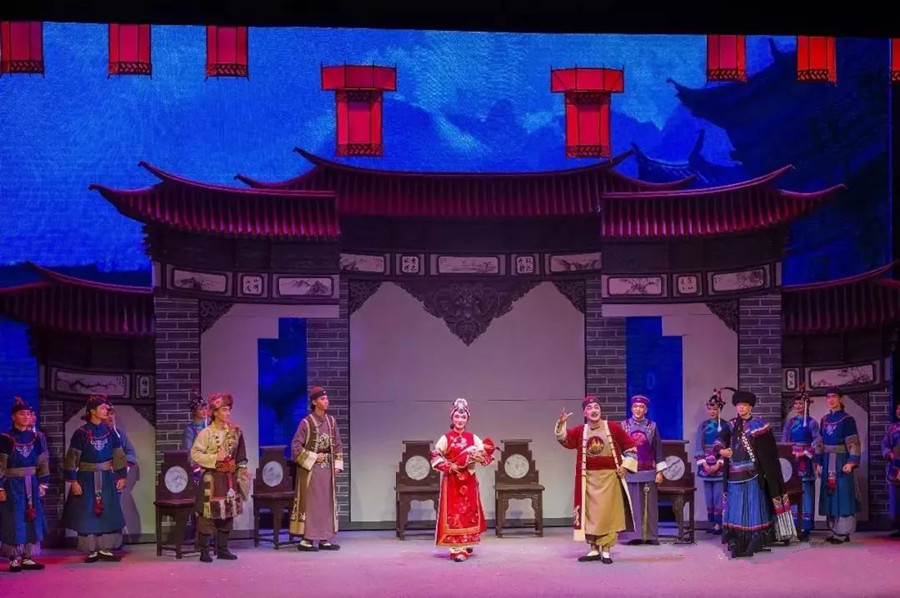Bai Opera
The Dali Baiju Opera (Bai Opera 白剧)
The original name of the Baiju Opera was the Cuicui Tune. It is very popular throughout the village of the Baizhu Nationality. The ancient performance stage for the “Cuicui Tune” are still existing in the larger villages. The Cuicui Tune has a special artistic style, and its words are a combination of Bai dialect and the Chinese language. Most use the rhyme pattern of Baizu Nationality folk songs of seven seven seven five. The feelings of the Baiju Opera is natural and humorous. The singing tune is divided in 9 Bans and 18 Tunes and the actors are divided as Sheng, Dan, Jing and Chou. There are fixed face-dresses for actors. The performance patterns blend with those of Dian Opera and the Flower Lattern. There are no accompanying music for the singing and the passage music is somewhat long, played by Suo Na. Becaue the performers were all the farmers and the performances were spare time activities, so the stage words of many performers were given to the audiences during the course of the passage of the Suona music played by the opera teachers. The themes of this type of opera included historic opera reflecting the life of the Baizu Nationality, such as “Du Chao Xuan”, “the Firing Songming Building” and “Zhangzi Ru Beans”, and also those transplanted from the Dian Opera, such as “three Heroes Fighting Lubu”, “Wu Tai Meeting Brothers” and “Lance Fighting Little Liang King”.
Bai Opera: Opera of Bai Ethnic Minority

There were no professional organizations for the “Cuicui Tune”, and there were only seasonal self-playing and self-enjoying amateur organizations. After the foundation of the People’s Republic of China, artists made efforts to straighten out and dug out the Baizu Nationality Opera of “Cuicui Tune”, and established professional organizations and made the opera into a national opera. In 1962, the Dali “Cuicui Tune” Troupe participated the Demonstration Fair of the National Opera of Yunnan Province, performing the traditional “Cuicui Tune” opera of “Firing Milling Housing” and “Dou Yi Xia Ke”, etc. in Feb. of the same year, the first professional Baiju Troupe in the history of the Baizu Nationality was formally founded, and the actors in the “Cuicui Tune” Troupe were all combined into the Baiju Troupe of the Dali Baizu Nationality Autonomy.
The Dali Da Ben Tone
The Da Ben tone was a folk music art in the villages of the Dali baizu Nationality. It was usually performed by one actor singing and one actor playing accompanying music with major 3 chord. The contents of the singing have a somewhat complete story, singing voice, tone, singing words and rhyme, and the characteristics are all unable to be separated from the folk songs and music of the Baizu Nationality. The form of the singing words of the Da Ben Tone was called “the Form of Mountain Flower”, and this form was a unique folk word form of the Baizu Nationality. The rhymes of the Da Ben Tone mainly includes the four major rhymes of the “Hua on Hua”, the “Oil Locking Oil”, the “Lao Li Tiger” and the “Cui Yin Yin”, and there were several minor rhymes under them. The music of the Da Ben Tone was named as “Nine Bans, Three Tunes and Eighteen Tones”. It has been found out more than eighty music stories of the traditional stories of the Da Ben Tone, and they are very popular in the villages of Dali. The schools of the Da Ben tone of Dali are divided into the South Voice and the North Voice. After the foundation of the People’s Republic of China, The Communist Party and the Government paid close attentions the Da Ben Tone of the Baizu Nationality, and organized the folk performers to publicize the policies of the Party and sing the praise of the socialism in the singing pattern of the Da Ben Tone. On most of the national festivals, such as Ben Zhu Festival and 3 Moons Festival, and on most of the occasions of moving into the new house, the Da Ben Tone singing activities shall be taken.



http://www.ynich.cn/view-ml-11111-1154.html














